
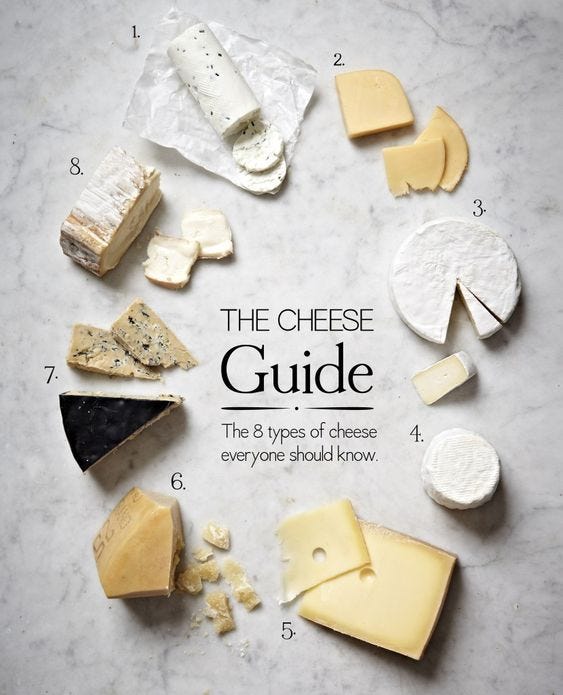
You’ve gathered several artisan cheeses, and you’re ready to turn them into a tasty cheese board. But before you grab your cheese knives and start cutting up those wheels and wedges, it’s a good idea to plan out how you’ll cut each different-shaped cheese based on different shapes and textures.
Aside from aesthetics — who doesn’t want a gorgeous cheese and charcuterie board to admire before they dig in? — how you cut a cheese can affect the eating experience, too. In general, you want each piece to be a cross-section from the center to the rind so that each piece includes the full range of flavors and textures. Here’s how to cut different cheeses so they’ll taste and look their best.

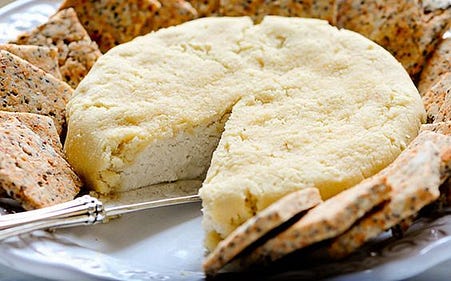
HOW TO CUT LOG-SHAPED CHEESES
Logs of very soft cheese like Miracle Springs Farm’s Everything Chevre don’t necessarily need to be cut. These types are so soft and spreadable that often, it’s best to serve them whole with a spreader or soft cheese knife and allow guests to cut their own pieces.
But if you want to pre-portion, the best way is to cut each log into several uniform rounds. Use a thin-bladed soft cheese knife or cheese wire for this delicate job. They’ll keep the cheese from sticking to the knife blade and getting crumbly and misshapen.
Choosing the right type of cheese knife is imperative for many reasons, with the main one, of course, being the proper cutting of cheese! One of the most common options available is the Damascus steel cheese knife.
Why Is a Cheese Knife Important?
Anyone who has ever tried to cut a hard-shelled yet soft piece of cheese with the wrong kind of knife can attest to the importance of having a proper cheese knife around the house.
The unique textures you’ll find in soft cheeses, as well as many hard cheeses, make having the right tools for the job a necessity. If you try and use the wrong type of knife, you are liable to simply make a mess! As well, you’ll likely end up wasting a good deal of that expensive gourmet cheese you sprung for at the store.
HOW TO CUT SOFT WHEELS OF CHEESE
Small, whole wheels of cheeses like bloomy rinds and washed rinds are simple to cut: just pretend you’re slicing up a birthday cake.
Cutting equal-sized wedges from the center out ensures that each piece will include the cloudlike center, lush cream line, and delicate rind, giving each bite the full range of flavors and textures for the cheese. A thin-bladed knife or skeleton knife will give you the best results. This method also works for square-shaped bloomy and washed rind cheeses like the ones from Tulip Tree Creamery or Boxcarr’s robiola-style blocks.
If the cheese you’re serving is too gooey and liquid inside to cut normally — like Firefly Farm’s Merry Goat Round Spruce Reserve, for example — that’s no problem! Simply use a sharp knife to cut through the top rind, almost as though you were opening an aluminum can. Peel back the “lid” and let your guests dip in with bread, crackers, veggies, or a spoon.
HOW TO CUT PYRAMID-SHAPED CHEESES
These uniquely shaped cheeses can feel intimidating to cut, but they’re actually quite simple to handle. Use a sharp, thin-bladed cheese knife or skeleton knife so the soft, delicate cheese doesn’t stick to the blade.
Why Is Damascus Steel the Best for Cheese?
The reason that Damascus steel is such a popular option amongst cheese connoisseurs is that it is incredibly lightweight and incredibly strong.
Blades made from Damascus steel can be thin and strong enough to make fine cuts on even the softest cheeses without making a mess. As well, they’re lightweight enough to allow for the utmost precision.
Three Great Damascus Steel Cheese Knives!
Now that we know a little bit more about cheese knives and why Damascus steel cheese knives are generally considered the way to go, let’s take a look at some great examples! These knives, whether serrated or not, all feature Damascus steel builds, which make them great cheese knives!

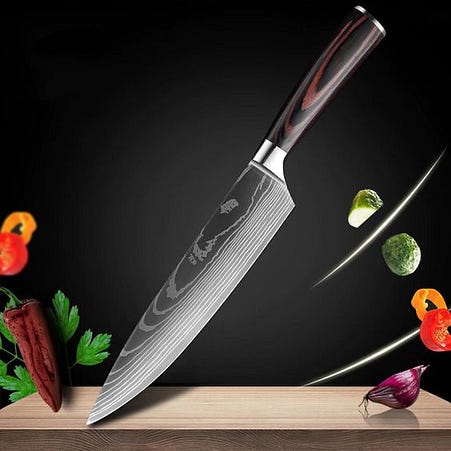
Shun Kai Classic Utility Knife 15.2cm
From prestigious Japanese kitchen knife manufacturer Shun, the Shun Kai Classic Utility Knife is an excellent option for those chefs looking for a single all-purpose cheese knife.
This knife is made using 324 layers of Damascus stainless steel, so you know it has all the strength and durability needed for the job. As well, its hand-sharpened 16 degree double-bevel gives it the perfect functionality for precise cuts.
This knife features 324 layers of Damascus steel in addition to i’s proprietary VG-MAX cutting core, which gives it the best of both worlds in terms of strength and durability. The blade is grafted onto an ebony PakkaWood handle, which provides charm, sturdiness, and comfort for careful control.
Wherever precise cuts are needed, this all-purpose utility blade is perfect, and that includes most cheese-cutting incidents a chef is likely to face. It’s nimble, sharp, and strong, allowing you to make small cuts and big cuts with both hard and soft materials.

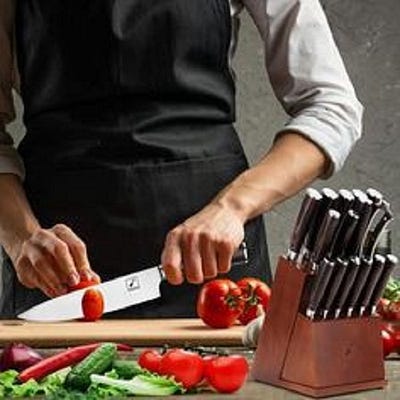
Shun Kai Classic Tomato Serrated Knife 15.2cm
Here’s another knife from Shun, this time with serrations for cutting softer cheeses. It features all the same benefits of the other Shun knives, but its serrations make it ideal for some unique situations.
As the name implies, this serrated knife from Shun is optimized for cutting into tomatoes. As one can imagine, this means that the knife is also perfect for cutting into some incredibly soft cheeses!
The many sharp serrations along the blade allow chefs to make easy and smooth cuts into even the softest cheeses without any mushing. It’s also sharp enough to get through tough skins, meaning that brittle cheese rinds won’t be crumbled up with the soft cheese.
This is certainly an excellent kitchen knife for those who are going to be eating a lot of soft cheeses, and it’s versatile enough to be used in plenty of other situations, as well!

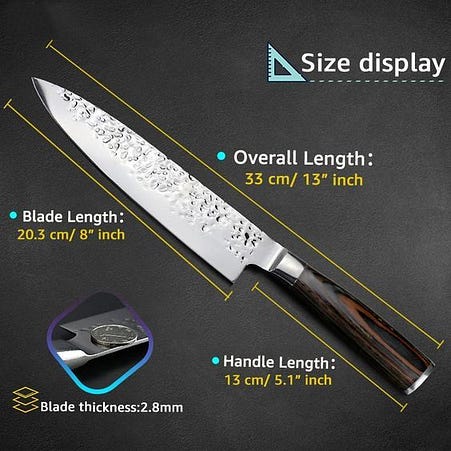
Tojiro Pro Flash 63 Layer Damascus Steel Utility Knife 15cm
Here’s another all-purpose utility kitchen knife, this time from Tojiro. Tojiro is another excellent and prestigious knife manufacturer based out of Japan, finding its home base in Niigata. As with Shun, they offer incredibly high-quality steel blades that utilize Damascus stainless steel.
The Right Damascus Steel Cheese Knife for the Right Situation
There’s certainly a lot of information to take in when it comes to choosing the right cheese knife, and hopefully this article made it a little easier for you!
While there’s no one perfect knife for all situations, even regarding cheese, any of these knives would certainly find plenty of use in the cheese-lovers kitchen.
A serrated Damascus steel cheese knife would be ideal for softer cheeses, while a non-serrated all-purpose Damascus steel knife would likely find more versatile use with milder and harder cheeses.
Any of our winning options are quality knives that will serve you well, but selecting the perfect one is about your preferences and ideal price point.Want more recommendations for the best kitchen knives and cutlery to complete your knife set? Check out our guides to the yier Damascus knife.
Why choose YIERCITY?
We do professional knife set retail and wholesale business. We hope to be your stable global supporter and partner.
We are an enterprise integrating factory and trade, specializing in the design, manufacture and sales of high-quality knife sets.
We always make every effort to ensure the quality of each set of knives.























